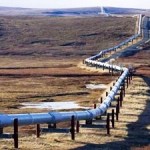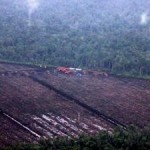 “Keeping in mind the present scenario of global climate change, we must learn from the mistakes we have made in the past. With the help of new technology, better implementation rules, and proper planning and management policies, we can hope for a better environment. We should manage our resources efficiently and in a sustainable manner for a good environmental-friendly living.”
“Keeping in mind the present scenario of global climate change, we must learn from the mistakes we have made in the past. With the help of new technology, better implementation rules, and proper planning and management policies, we can hope for a better environment. We should manage our resources efficiently and in a sustainable manner for a good environmental-friendly living.”
– Laxmi N Goparaju,
The recent debate on Urban Sustainability has forced us to think over some of the missing links as to why we are trying hard yet failing to achieve the desired levels of perfection. Is our approach correct or do we have problems along other dimensions – poor resource management and lack of suitable policies?
Increasing population has put heavy burden on urban natural resources. The competition for jobs, homes and vehicles has pulled the masses to these urban cities that have seen unprecedented expansion in recent years. Forests have been cleared to make way for offices and industries that has reduced the quality of air, water and space which have become a primary concern now.
A look back in history tells us that there have been problems in our approach, planning and implementation. With little scientific evidence coming in time over the sustainability aspects of our urban development plans, we have learnt our lessons the hard way. In the process of industrialization and urbanization, we have introduced many new technologies, which, as time passed, have turned out to be a curse rather than a boon to mankind.
Let us look at some of them and see what we can learn from them.
 Lesson 1: Introduction of DDT – the Infamous Pesticide
Lesson 1: Introduction of DDT – the Infamous Pesticide
DDT – or what is chemically known as dicholoro-diphenyl-tricholoroethane – was first used successfully during the Second World War to control infectious diseases like malaria and typhus. In 1948, it was re-discovered as a potent poison for many insects, and thus, was introduced in agriculture as an insecticide. Later in 1972, U.S. banned the use of DDT. Other countries, like Germany, Denmark, Sweden and U.K. followed.
Ecological Consequences:
Initially, DDT was a boon in the agricultural sector for eliminating all the harmful pests on crops. But in doing so, DDT entered the food chain and it was found that it had the property of degrading slowly. It remained in the environment, and in doing so, it multiplied at every trophic level; this is known as biological magnification. It entered the human body via food chain; thus, causing various types of health problems. Not only in humans, it was seen to affect birds and caused thinning of egg shells and loss of reproductive capacity. DDT, when it entered the lakes and ponds, proved to be detrimental to fish and fish eating animals. Thus, the entire food chain seemed to be affected by DDT.
Moral of the Story:
Such dangerous pesticides should be experimented at very small scale initially, which would not affect the environment or mankind. Proper scientific investigation should be carried out before introducing it on a large scale. New methodologies have been developed to overcome the use of pesticides and insecticides in traditional farming practices. So, where does the sustainability factor lie?
Organic Farming:
Use of insecticides and pesticides in farming has dampened the spirit of buying fruits and vegetables in the market. People wonder how healthy they might be. This thought has given way to the new concept of organic farming. Organic farming is a healthy and natural method of growing fruits and vegetables. There is no concept of using synthetic fertilizers or pesticides. This ensures good quality of products.
How would we sustain in the present times?
Each one of us should grow a vegetable or a fruit in one’s kitchen garden. In a colony, we can exchange it with our neighbors, just like people used to do it as barter system in ancient days, and which is still practiced to a certain extent in rural areas.
Precision Farming:
What actually is precision farming? It is a farming management based concept using latest technologies like geospatial tools, satellite data and information technology. Global Positioning System (GPS) is also used widely. This concept emerged in early 1980 in United States of America. Since then, it has gained importance with respect to sustainable agriculture issues. It addresses sustainability issues relating to crop cycle, soil composition and farmers.
What does the farmer achieve by utilizing this technology?
A farmer can –
- Locate a field of good productivity based on data about soil and residual nitrogen. GPS can be employed in delineating the exact boundary.
- Climatic conditions, soil status, invasion of weeds, disease outbreak can be studied and monitored. Growing crop patterns can be studied at regular intervals.
- Satellite imagery helps in producing maps showing crop biophysical parameters.
 Lesson 2: Urban Development – Drainage Systems in Cities
Lesson 2: Urban Development – Drainage Systems in Cities
Increasing population has given rise to sky-high buildings. People need space to live in. In this process of urbanization, we have given little space for a proper drainage pattern. When rains come, drainage pipes become clogged and sewer water overflows on the roads. Overall, rainy season in cities becomes a dirty season to look forward to.
Ecological Consequences:
Improper drainage system is a threat to the environment. Waste, if not handled properly, would cause adverse impacts like water contamination, attracting insects and rodents, increased flooding due to blocked drainage canals and gullies. It also releases greenhouse gases which in turn impact global climate change, hence should be given proper attention.
How Our Fore-fathers Built Cities?
A good example from our history books is about Mohenjodaro – the largest urban settlement of Indus valley civilization. The city was rediscovered in 1922, excavated, and is now an archeological site in Sindh district of Pakistan. This city has been known for its excellent layout. Drainage system was well-elaborated and orderly. Waste water would drain into main pipelines, which were covered. Every house had wells for water, a bathroom and proper waste disposal system. From the excavations ,it is revealed that they were skilled urban planners and gave importance to cleanliness.














